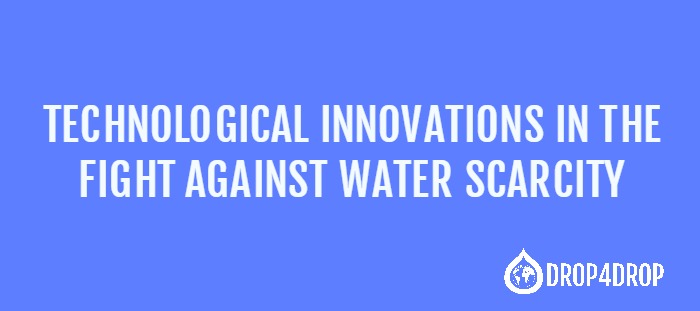
Technological innovations in the fight against water scarcity
Water scarcity is an increasingly pressing issue in our modern world and UN predictions say that by 2025 1.8 billion people will live in regions of “absolute water scarcity”. Therefore, it is fitting that many are rejecting conventional approaches to water and providing innovative solutions to secure future supplies of water for future generations.
This month Bill Gates drank water distilled from faeces in efforts to promote innovative technology that could generate water for the millions within the developing world who live without access to safe drinking water. The Omni-Processor created by the company Janicki Bioenergy could be among the solutions to sanitation and water problems facing many people today. The process involves the boiling of sewage water and the resulting water vapour is fed through a processor which thoroughly cleanses it producing safe and clean drinking water. The cast off solids are then burned creating steam which is generated into electricity which powers the machine. Excess electricity is also generated for the local community. Alongside the water and electricity benefits, this innovative technology also provides clean and safe disposal of human waste. This sanitation solution could provide help to the 2.6 billion people do not have access to adequate sanitation. This project funded by the Bill and Melinda Gates Foundation is only one example of technological solutions to the world water crisis.
Another area which is experiencing interest and innovation is desalination which is the process of turning salt water into drinking water. Fresh water only counts for 2.5% of the world’s water; with 75.5% containing salt. While there is no lack of salt water, the process has been seen as too costly and energy intensive for many to invest in, however, recent attempts have aimed to reduce the resources required in the process. A more affordable approach to desalination could provide water for energy and human consumption and a long term solution to water scarcity. This has been implemented on an international levels with many countries gaining significant levels of their water from desalination, these countries have included Saudi Arabia, Israel and Australia. Improvements in the cost efficiency could lead to it being implemented on a larger scale. Traditional desalination has used a reverse osmosis system which forces salt through a membranes in order to separate it from the water. Among many improvements to the process is that of California Company WaterFX. Their system uses a solar “trough” with parabolic mirrors to create a more efficient powerful evaporating unit. Renewable desalination can provide an energy and water friendly approach to desalination.
Both the Omni-Processor and desalination innovations are large scale solutions for the mass provision of water independent from rainfall. However, there has also been a resurgence in smaller scale innovations to reduce the amount of water wasted on an individual level. For example, Ludwick Marishane a South African 17 year old created a water free bathing alternative called DryBath which blends odour eliminating chemicals and oils to provide a bathing alternative. DryBath can help to both reduce disease and water consumption for those who do not have readily available access to water.
It is crucial that technological innovations receive investment as they can prove to be monumental within both developed and developing countries in saving and improving lives. Therefore, water sector investments must continue to flow despite current cut backs in many areas. Innovation requires an interdisciplinary approach from both development and technology sectors as they can provide a long term solutions that will provide beneficial for the future generations
Albert Einstein once described insanity as “doing the same thing over and over again and expecting different results”. Traditional approaches to water and energy cannot solve new environmental and energy problems. So, as we embark on a new year- let’s change technological stagnation and inaction into creativity and innovation.